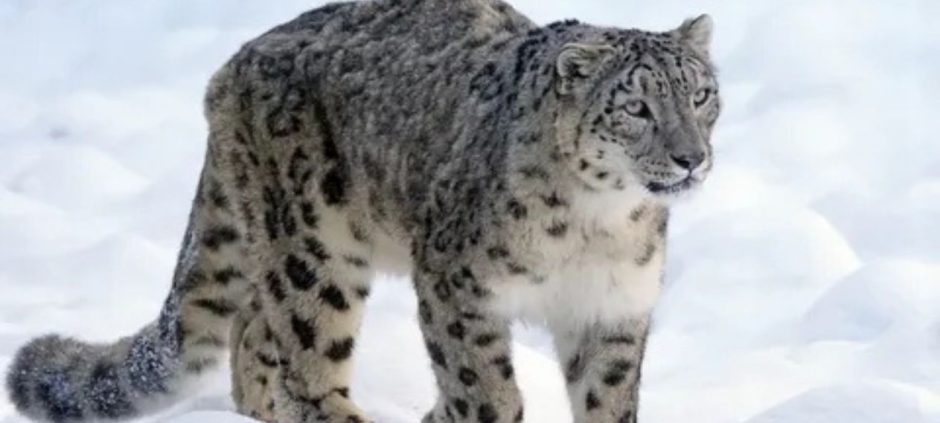Most Pakistanis grow up hearing stories about the Ghost of the Mountains, the Snow Leopard. But very few know how close this mysterious cat actually lives, hunts, and survives in our northern ranges. And fewer ever get the chance to see one in real life.
If you’ve ever been curious about where these rare cats roam, how you can respectfully spot them, and why their survival matters to Pakistan, this blog takes you straight into their world.
Where Snow Leopards Live In Pakistan
Pakistan’s northern belt is full of dramatic landscapes, and the Snow Leopard has made these silent, rugged mountains its ancient home.
Before we discuss where sightings happen, let’s pause for a moment, because these locations are raw, untouched, and demanding.
Let’s break it down location-wise:
Khunjerab National Park (Gilgit-Baltistan)
Arguably the best place in Pakistan for Snow Leopard sightings. Rangers, researchers, and lucky tourists have seen them near ridges, streams, and rocky edges during early morning and late evening hours.
Misgar Valley
A remote spot near the China border where local herders often report sightings. Its isolation makes it ideal for patient wildlife watchers.
Chitral Gol National Park (Khyber Pakhtunkhwa)
Known for conservation work and camera-trap studies, this park has a healthy Snow Leopard population. Winter sightings increase due to prey movement.
Shimshal Valley
A high-altitude wonderland where mountaineers and trekkers sometimes catch a glimpse while crossing the Shimshal Pass.
Deosai Plains (Skardu side)
While not as common as Khunjerab, rare sightings have been documented, especially on the higher cliffs surrounding the plains.
How To Spot The Elusive Snow Leopard Safely
The Snow Leopard is not just rare, it’s a master of camouflage. So spotting one requires preparation, patience, and respect for its habitat.
Here’s your quick guide before you pack your bags:
- Hire trained local guides
Especially from Khunjerab and Shimshal. They know the movement patterns and safe viewing points. - Visit during winter
Snow makes spotting easier because the leopard moves lower for prey. - Stay quiet and calm
Loud noises, drones, or sudden movement can push the animal farther away, sometimes permanently. - Use binoculars and long lenses
Never attempt to get close. Ethical distance protects both you and the animal. - Don’t feed or disturb local wildlife
Because altering prey activity disrupts the entire ecosystem.
Pakistan’s officials have recently debated moving Snow Leopards abroad, which many conservation groups strongly opposed. If you’re curious about how Pakistanis reacted to this issue, you can read more here: Opposition grows against the transfer of these cats.
Snow Leopard In Local Culture
The Snow Leopard isn’t just an animal; it’s part of northern identity. From local stories to spiritual symbolism, this cat has always held a place of deep respect.
Here’s how different communities see it:
Symbol of bravery
In Gilgit-Baltistan, hunters once saw the Snow Leopard as the ultimate test of courage.
A guardian spirit
Some Wakhi and Burusho families consider it the mountain’s silent protector.
A sign of harmony
Communities living close to nature believe the Snow Leopard reflects balance in the ecosystem.
A reminder of patience
Locals admire how quietly and gracefully it survives in harsh terrains.
A cultural pride point for Pakistan
It appears in school lessons, documentaries, wildlife campaigns, and international conservation events.
Their relationship with the Snow Leopard goes beyond survival; it reflects centuries of coexistence.
Why the Snow Leopard Is Disappearing
This part matters the most because Pakistan is among the few countries still lucky enough to host this rare cat.
But the numbers are dropping fast.
Here are the main threats:
- Habitat loss due to expanding settlements and roads
- Poaching for fur or illegal animal trade
- Decline in prey species like ibex and blue sheep
- Human-wildlife conflict occurs when livestock is attacked
- Climate change is altering snow patterns and prey movement
But here’s the hopeful part: Pakistan can still protect the Snow Leopard if we make the right choices now. Some practical actions include:
Strengthening community-led conservation projects
Locals protect wildlife better when they benefit from tourism and eco-programs.
Increasing camera-trap monitoring
Helps track population and movement.
Supporting compensation programs for livestock losses
Reduces conflict and protects the cat.
Promoting ethical winter tourism
Creates jobs and encourages responsible wildlife observation.
Educating young Pakistanis
Awareness is the strongest long-term solution.
The Path Forward
The Snow Leopard is more than a rare mountain cat; it’s part of Pakistan’s identity, landscape, and ecological balance. Protecting it means protecting our mountains, our tourism potential, and our connection with nature.
If you’ve ever dreamed of seeing one, remember: patience, respect, and responsible travel make the experience meaningful, for you and for the Snow Leopard.
Ready to explore more wildlife stories or plan a responsible northern adventure? Dive into our latest guides, share your thoughts, and stay connected for more Pakistan-focused wildlife insights.










